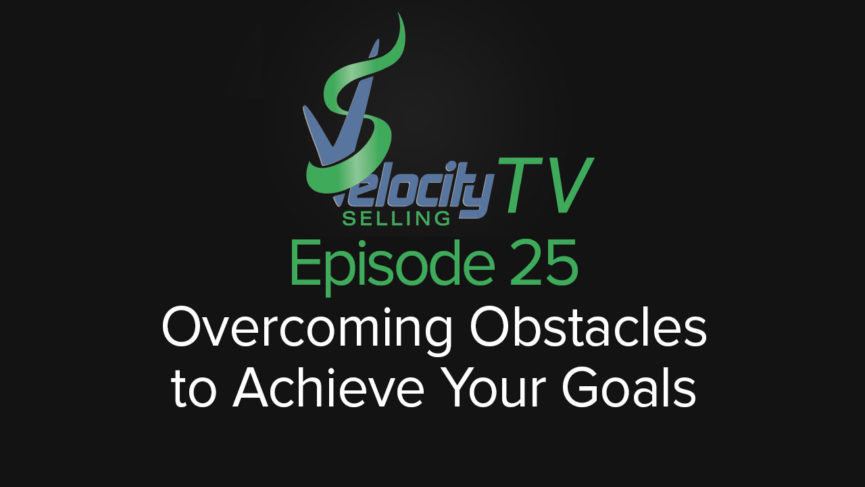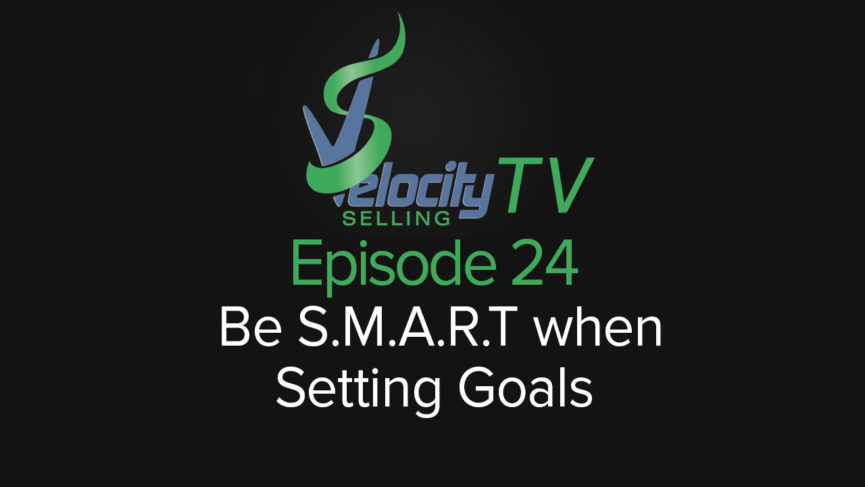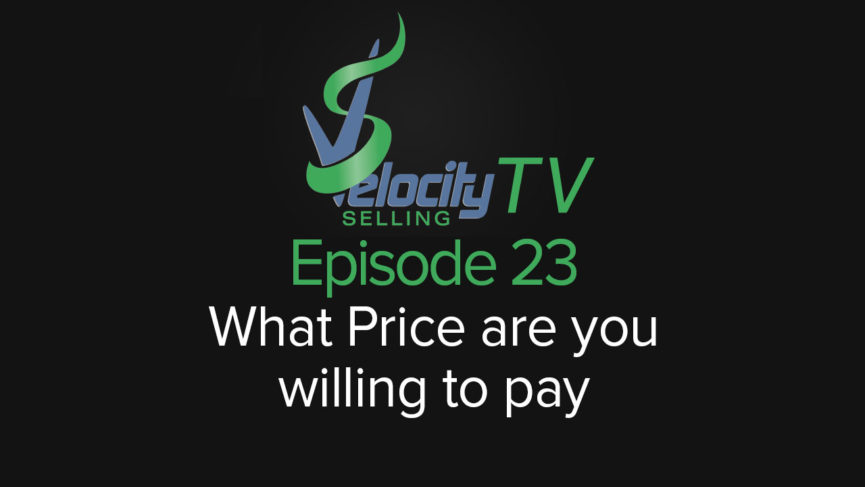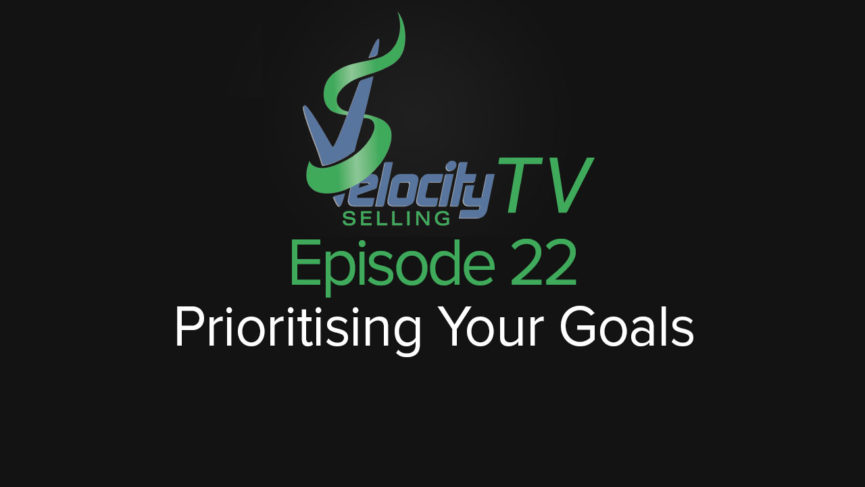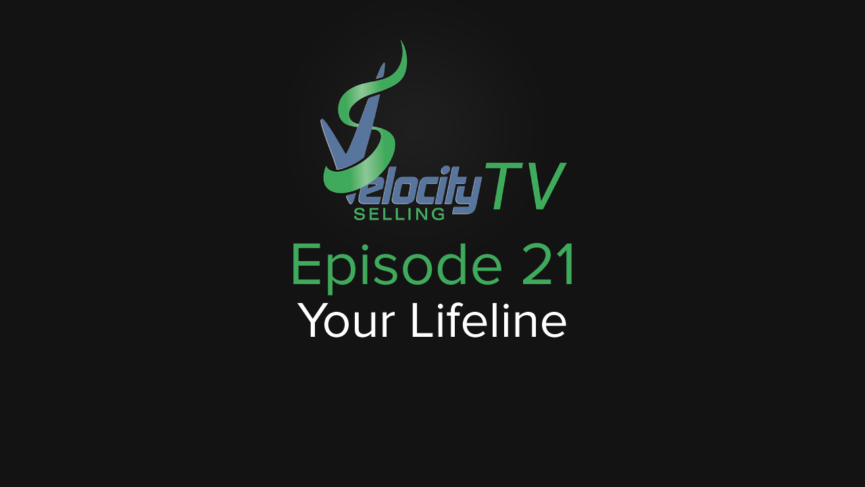In today’s episode of Velocity Selling TV, Bob Urichuck and Matthew Whyatt enlighten listeners on what it takes to overcome any obstacles in the way of your goals and dreams.
Velocity Selling TV Episode 26- Applying Skills and Behaviour
Matthew: Well good morning everybody, Matthew here again with Velocity Selling episode twenty-six, and we’re talking about goals. We’re really getting into it. We’ve got, of course, the founder of the company up in Ottawa, Canada, Bob Urichcuk. Welcome Bob.
Bob: Yeah, hi Matthew. Good to see you again.
Matthew: Great to see you too. So last we spoke we probably went a little longer than normal but we really got into thinking about the things that could go wrong, but nor trying to be negative about it but be realistic about it and then we can say, ‘What can we do when this happens?’ So when I’m building a sales script for a sales team, I ask somebody to be the negative Nellie. So I get the Nellie to sit there and say, rather than being the positive person, ‘Yes I’m interested and I’m really excited about that and I purchase’ well then I need somebody else to say ‘no, I’m not interested, I don’t want to know about it’. And so we actually try to build and formulate really great questions, because that’s what Velocity’s about, it’s understanding the right questions, the most powerful questions to ask the right person at the right time to actually build a proper sales structure inside a business. So, last time we spoke about obstacles that go wrong, this week, Bob and I were just talking about bringing together the skills and those sort of things that would actually make this and facilitate your success, so Bob, over to you.
Bob: Alright, thank you Matthew. Yeah, the skills and behaviour all relate to the goal that you outlined earlier, cause don’t forget we’re still working on the goal chart here. And if you haven’t downloaded the goal chart, make sure you do, in one of the previous episodes. So the goal chart identifies a S.M.A.R.T goal, the outcomes, what we see, what we hear, and what we feel. And of course, then we looked at obstacles- have a prepared mind, potential roadblocks, and what’s your contingency plan. And you gave a great story last week Matthew, on the Olympian from the states, the swimmer…
Matthew: Michael Phelps, yeah.
Bob: Michael Phelps. That was a fantastic story so congratulations on that. Now, what we need to look at next is what skills and behaviour are required on your part to become whatever that goal is. So I take a look at it, I had a goal to write a book. Well, what skills and behaviour do I need? Well, obviously, there’s research, there’s writing, there’s communication, you know, there’s going to be an editor, there’s going to be graphics, there’s going to be different things. And of course from a behaviour point of view is, well, I’m going to have to get up earlier, ‘cause that’s when I’m going to do it, that’s when I’m best, you know what I mean? So I would do it in my prime time, things along these lines. I organise myself in a timeline with the behaviours, the things I needed to do, when they needed to be done because behaviour in itself is a form of discipline- you know discipline we often say is a commitment to the most important person in the world, means doing what you have to do, even when you don’t want to do it. But the problem is, a lot of us have ineffective habits and those habits become, you know, bad.
Matthew: Yeah.
Bob: So what we need to do is change those habits to effective habits and these are, this is the time to identify the skills and behaviour you require to meet those goals because if you’re not going to have those skills or if you’re not going to demonstrate those behaviours, how realistic is it going to be for you to reach your goals.
Matthew: So how do you go about, so you’ve gone ahead and said ‘well I need these skills and behaviours so when I’m talking with customers we ask the question, ‘Are you able to or do you currently have the skills and behaviours?’ Or what, and then if you don’t, are you able to learn them? And if we can identify what they are, then we can check that box and then how do you then make that part of your daily discipline to make sure that actually comes in and you are able to acquire those skills.
Bob: That’s right, but again, it’s getting the participants engaged in the conversation so they write out what their daily behaviours are going to be and what skills they require. Because if you ask someone if they have the skills or not, they’re going to just say yes, right off the bat.
Matthew: Ok.
Bob: So what we do is we learn to ask a question more from a point of view of ‘Ok, you want to reach this goal, what skills and behaviour do you feel you need to be able to accomplish it?’ and quite often a sales managers, that’s a good question to ask of your staff. You want them to reach a particular goal, to replace you in the next year or two, well what skills do you feel they’re going to need to do your job? What training can you put them on? What kind of coaching can you give them? You know what I mean? This sort of thing so that they’re prepared to move to the next step. It’s like, you know, we’re in the sales business, we want to improve the bottom line. Well, if we’re going to improve the bottom line, we need to engage a group of people to brainstorm with us to come up with those skills and behaviour that they need to make it happen.
Matthew: Fantastic. Well look Bob, and of course the people who are listening in and who are individuals, can take that on board. Think about what they actually want to do. You know, if you want to earn a million dollars, you want to actually achieve this goal, what are the skills and behaviours that you need and then break that down on a day to day basis to either acquire those skills, if you’ve already got them, great, check. But then what are the behaviours to put them in place because skills without application, well that’s just theory isn’t it?
Bob: It’s, how do you say, ‘To know and not to do, is not to know’, you know?
Matthew: Well, on a bit of Confucius I think we’ll leave it at that or is that Sun Tzu? I’m not sure.
Bob: That’s Confucius I think.
Matthew: Alright, thanks Bob. See you next week.
Bob: Bye-bye.



